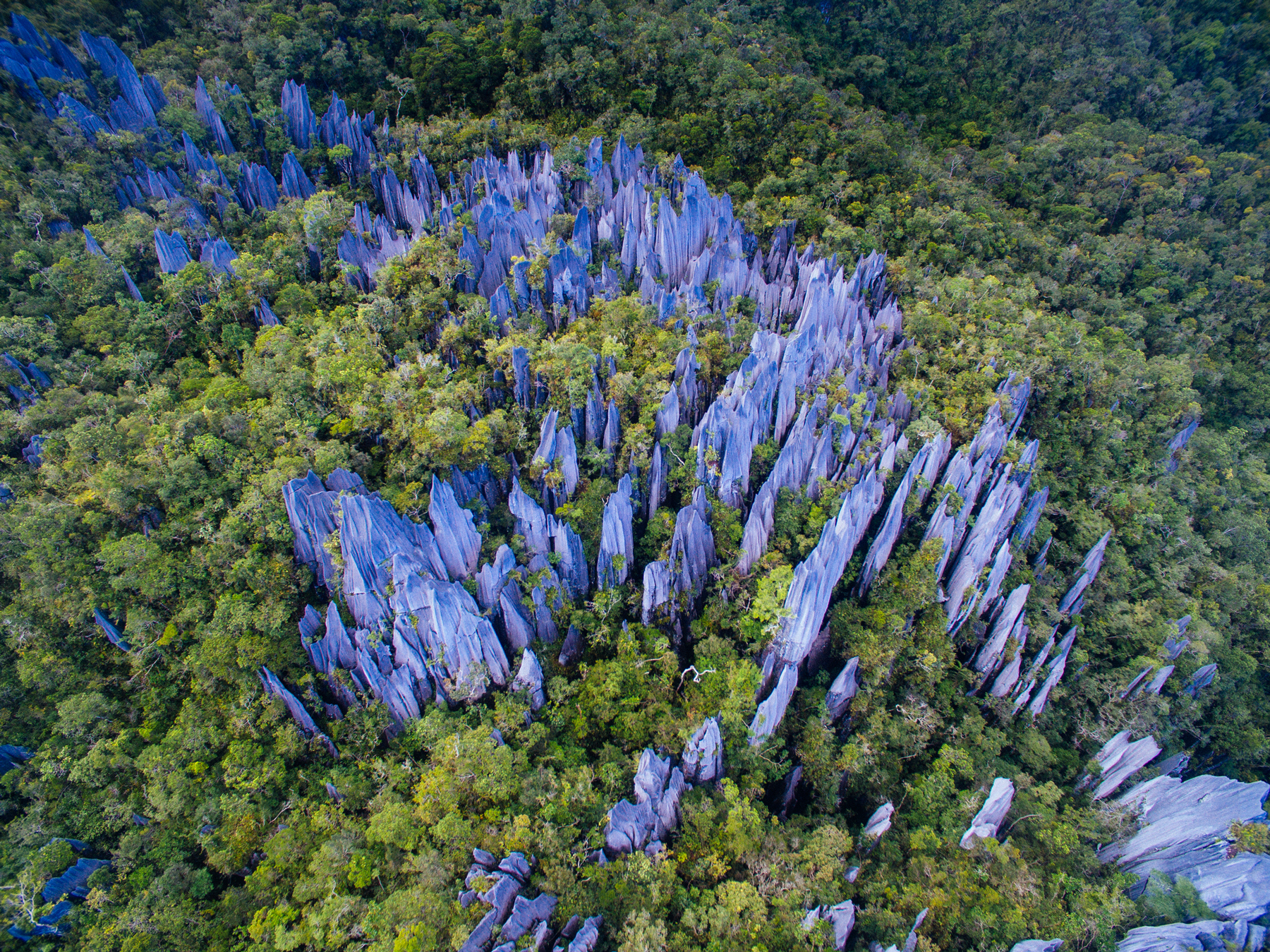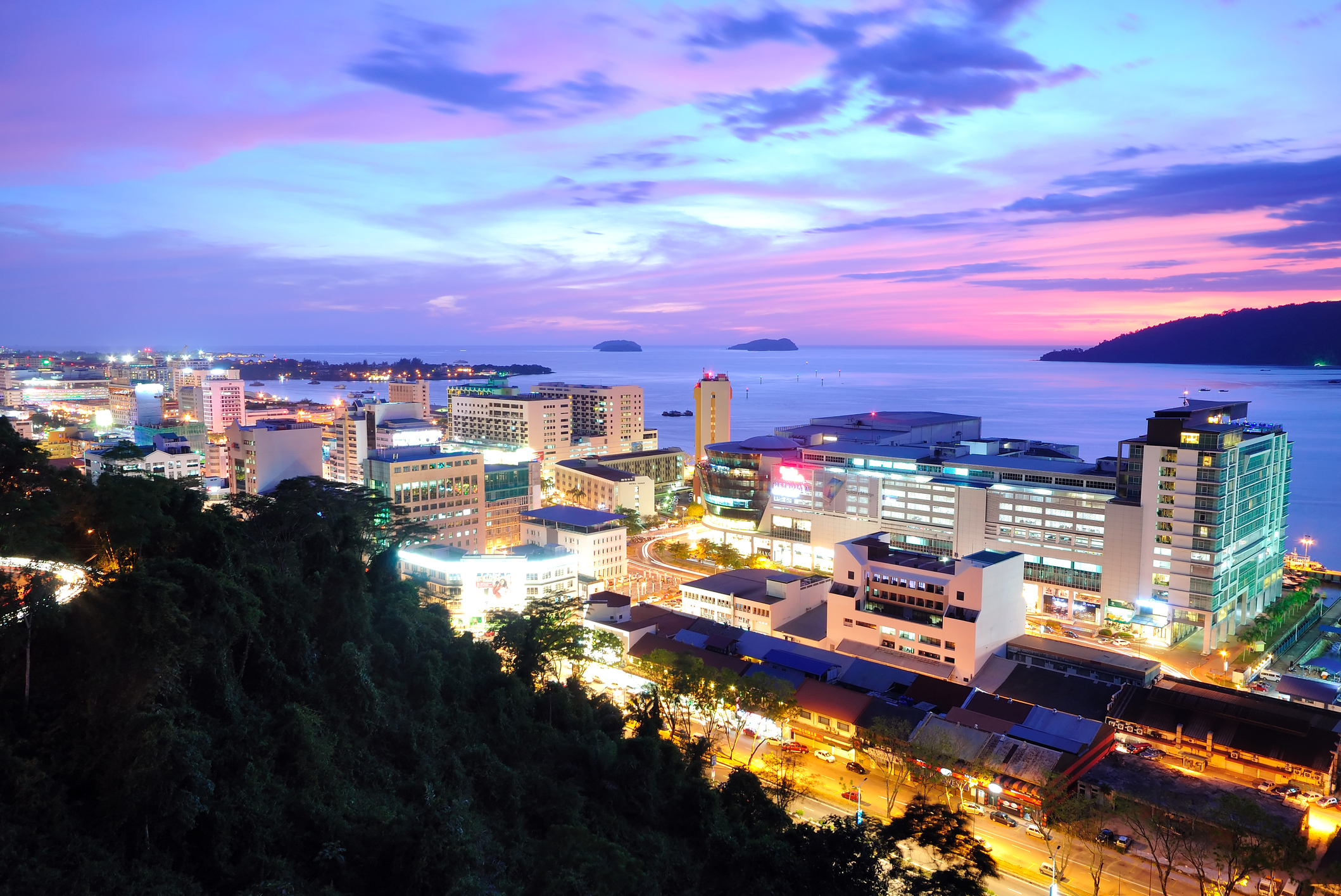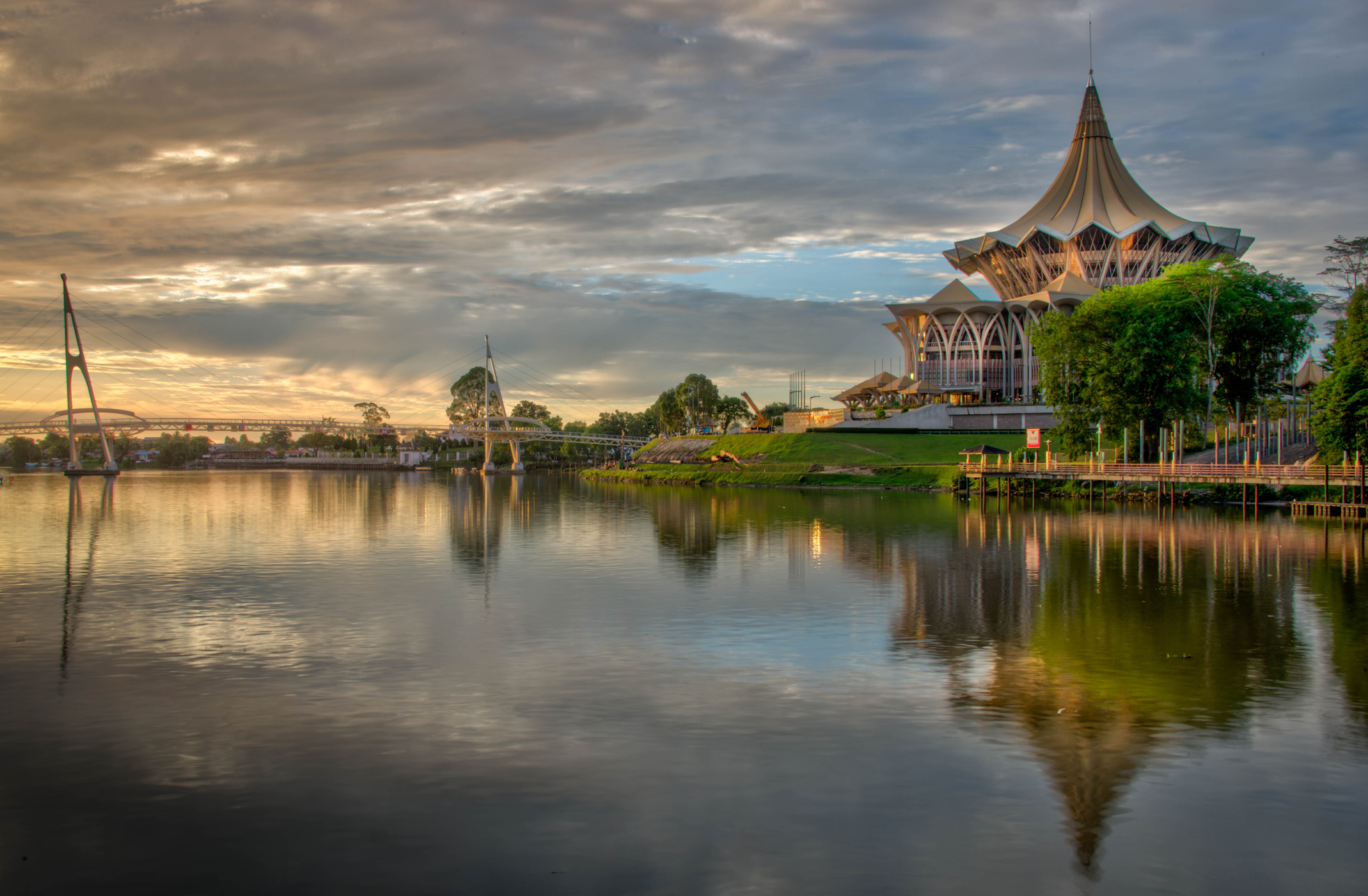
Mulu National Park
Above ground, hike to giant, razor-sharp pinnacles and rugged mountain peaks; below it, marvel at helictites and rock corals in one of the largest cave systems in the world. Mulu National Park is a geological wonderland.
Jagged, elephant-grey pinnacles rise 45 metres out of the forest like contemporary art sculptures, while vast limestone cave yawn beneath – some big enough to house a whole New York city block with room to spare. This is Gunung Mulu National Park. Not just viscerally awe-inspiring, it’s the final frontier of human exploration (on Earth, at least), with more caves discovered every year.
Located in Northern Sarawak, Mulu is so isolated it’s accessible only by prop plane to a small airport three kilometres from park HQ. Once here, exploration is on foot, kayak or boat, amid jagged karst towers and craggy summits, through sheer-sided gorges carved out by rivers, and across floodplains dotted with hot springs and waterfalls. 90% of the park area is totally protected and closed to the public, accessed only by research teams and the indigenous peoples of the region. What is accessible is magnificent, with gruelling mountain treks, overnight stays in tribal longhouses, and a jungle canopy walk from which it’s possible to spot maroon leaf monkeys, silvery gibbons, reticulated pythons, and 270 different species of bird.
As exciting as all this is, Mulu’s undisputed star attraction lies not above ground but under it. The park is home to the largest interconnected cave system in the world, and has hosted some of the longest and largest cave expeditions ever mounted. Today, there are four “show caves” accessible to the public, with vast chambers 150 metres in diameter, a giant rock formation that looks uncannily like Abraham Lincoln, and a colony of two to three million bats who swarm out of the cave each night in a spectacular exodus.


